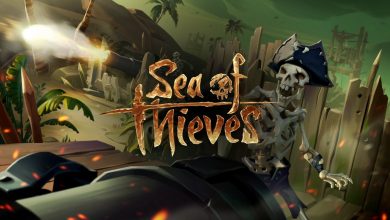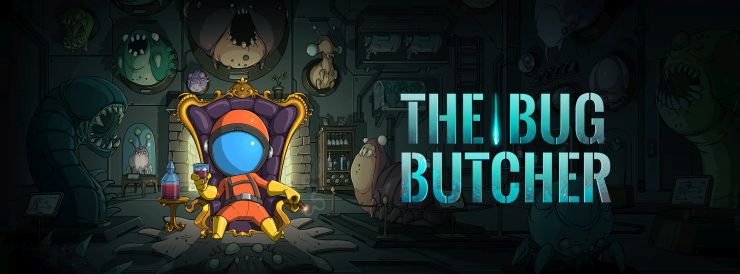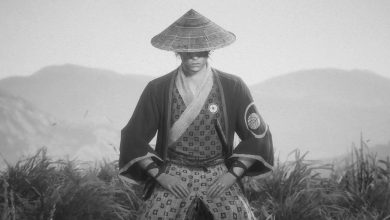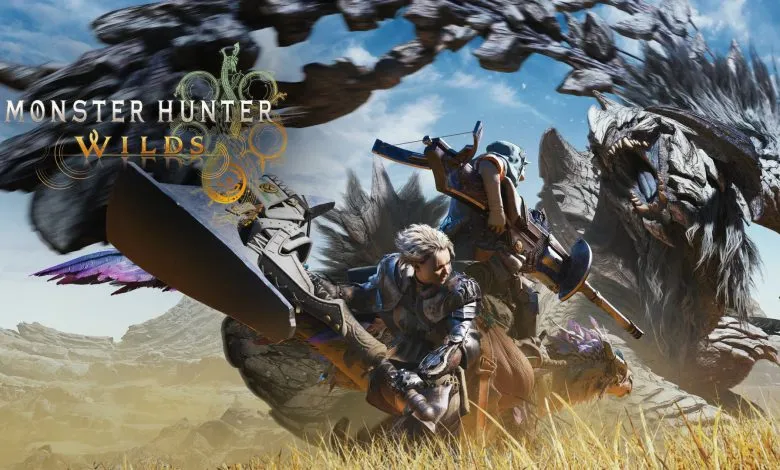
Entering the world of Capcom's monster predators as a complete ignoramus was quite a difficult but also a refreshing process. Monster Hunter Wilds (MHW) as a continuation of the successful Monster Hunter series has built upon all the previous versions and as such someone who had no exposure was bound to be overwhelmed. This initial jolt-shock was perhaps the reason why I feel Monster Hunter offered a rejuvenating breath of fresh air to my gaming habits, a point I elaborate on in the individual sections below.
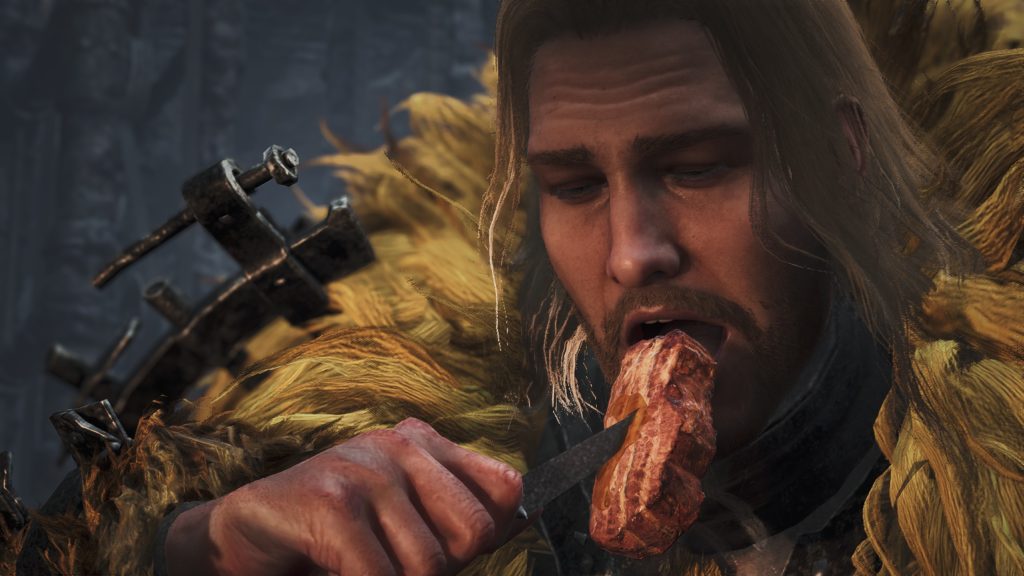
At the beginning of the plot we find ourselves in a habitat with the rest of the expedition consisting of various groups of monster hunters. Suddenly we find ourselves about to rescue a kid wandering in the desert but also threatened by ruthless monsters. The story of Monster Hunter Wilds will take us through different habitats where we'll meet many allies in our mission to take out monsters to ensure the balance of their ecosystems (and for Palico to get their armor). The scenario follows the gameplay loop of the game carbon copy: rebuilding in camp, upgrading equipment/crafting, fighting the next monster. As a natural consequence, the scenario is full of Japanese cliché tropes with situations where characters have completely extreme reactions to something seemingly minor, a monster appears out of nowhere, and in the end all goes well with everyone having learned powerful life lessons in the span of about twenty minutes.

The fluctuation of emotions between "I react extremely to something seemingly insignificant on the borders of otaku" but at the same time "I have the emotional intelligence to think deeply in a short time" is bordering on the kind of shtick that I admit I had missed. Monster Hunter Wilds is a Japanese game and clichés are part of it: from the stoic nods that hide half a book of words, to the fiery two-sentence speeches that inspire people and shake worldviews. Despite the intense fluctuations and uneven treatment of situations, MHW also gives us spectacular scenes with in-game cinematics where heroes will "jump" into situations without regard to personal cost. All because the steak flanks from each monster are too important to let go to waste.
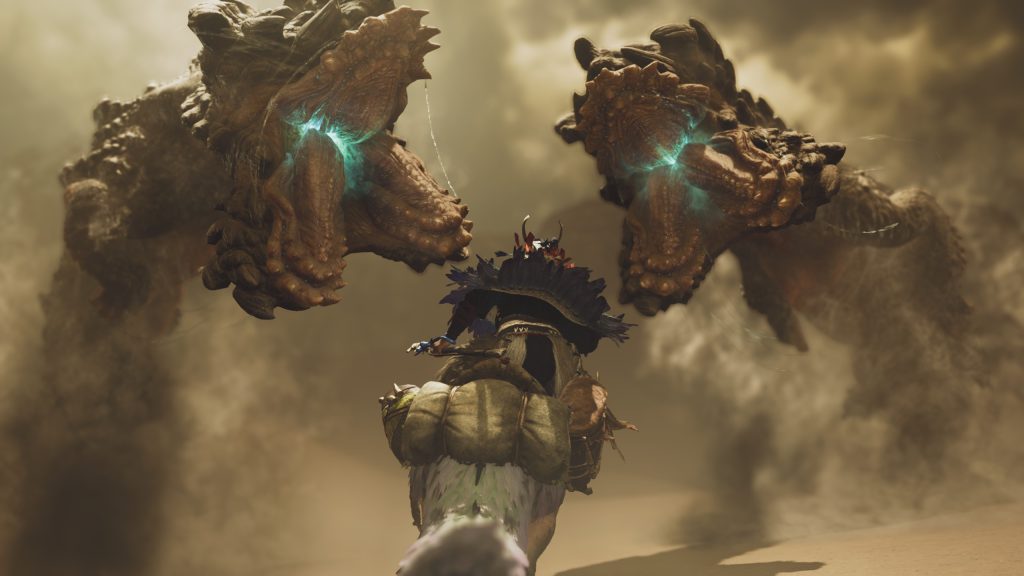
And we move on to the gameplay loop which is the quintessential feature of the game. Most of its basic elements have been described for Monster Hunter World by Vassilis Xerikos in his review. MHW is a 3rd-person action title with a basic focus on combat and equipment upgrades. We identify the monster we want to hunt (either through free roaming or as a side-quest), prepare with the appropriate buffs, crafting materials/consumables, engage in combat, collect parts from the prey, upgrade equipment and start all over again. Depending on the challenge of the monster each hunt can take anywhere from 5 to 30 minutes, and on later difficulties we will need a full arsenal of weapons to complete our mission.
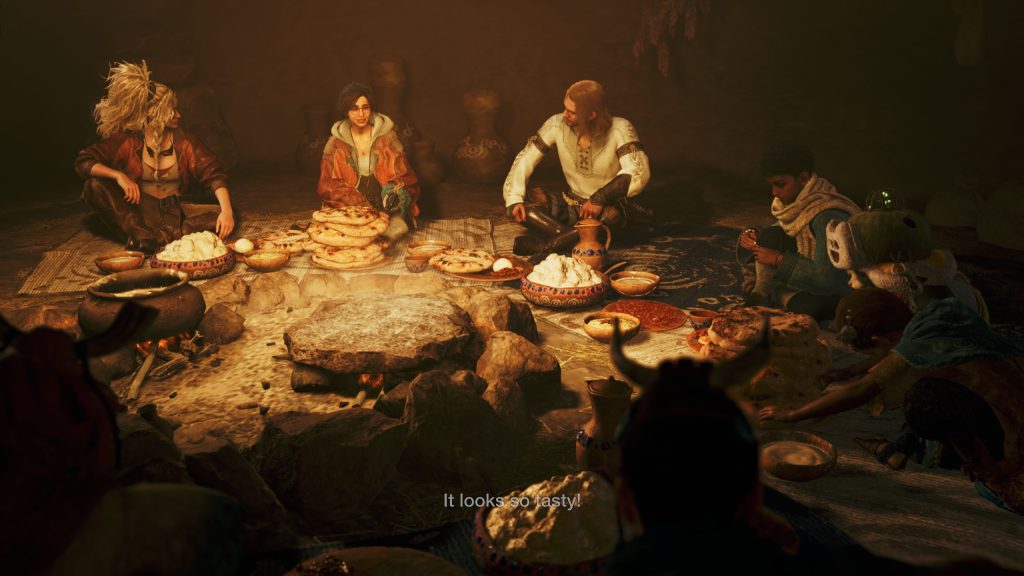
Here are the first two elements I encountered that overwhelmed me more than I can remember in a long time: the handling in particular and the whole design in general. After much habituation to western titles, MHW's design philosophy burst upon me like a fiery wave when you step out of a cool room. Faced with a plethora of options, the controller being a hub of crossovers with at least 5 interdependent button combinations that make handling branch out even further, a UI that gave seven different pieces of information at the same time, I had to decide how to proceed. The only wise choice was to go against my long-standing "do everything before moving on to the main quest" philosophy of approach and let the game take me by the hand. Suddenly, the renunciation of gaming compulsion built on muscle memory and conceited knowledge was exactly what I needed.
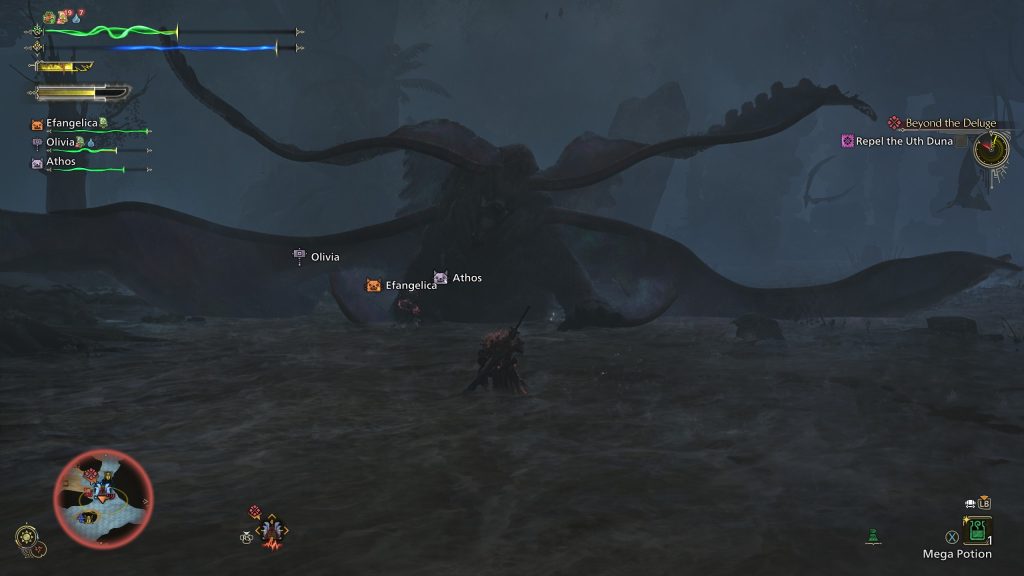
To start, I chose one of the 16 total weapons that determine all of the character's gameplay (practically class without a class). Armed with the Long Sword, which some might deem "ez mode", I continued on with the MHW plot unabated, learning all of their mechanics as it progressed. The novelty in Wilds is that we have the ability to equip our Seikret (our mount of choice) with a second weapon that is accessible during the hunt. This comes with the disadvantage that we have to ride the Seikret, which sometimes isn't ideal since it seems like the mount goes on autopilot and moves incessantly and for no reason at all. Therefore, although I was starting to feel quite comfortable with the handling after two or three hours there are still areas that need improvement.
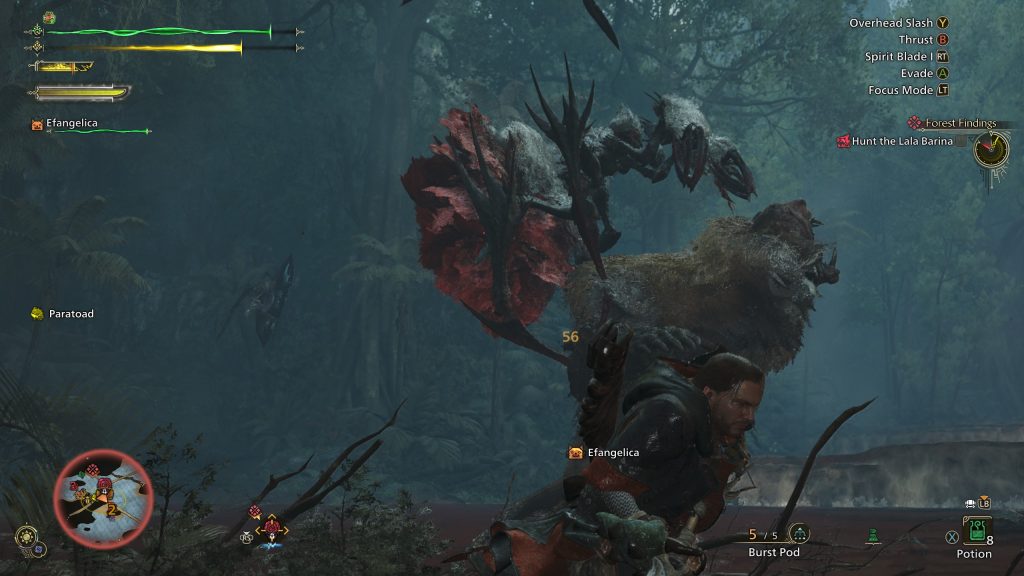
The above is perhaps the cornerstone of MHW, i.e. 'easy to learn, hard to master'. In this case for the Long Sword, although it is an easy weapon it is the combination of combos that elevates both its performance and our rewards at the end of each hunt. As Vasilis pointed out in the World review, there is no health bar that tells us how injured a monster is, but we can tell by its broader behaviour and movement from one location to another. We can now target specific parts of the monster (Focus Mode), especially if we have opened wounds in its body, which gives us more control over the parts we want to focus our attacks on (Focus Strikes). This accommodation leads to better execution of the hunt making it even more efficient in terms of time and grinding materials.
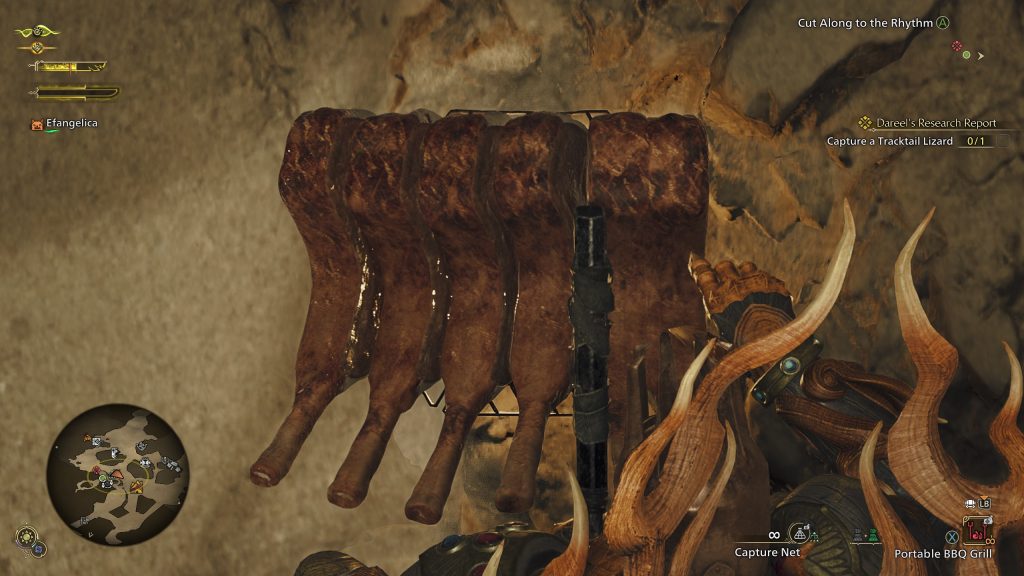
The more I progressed with Wilds the more I got caught up in its gameplay loop. It's the first time in a while that I didn't care about hoarding items so visiting Gemma (the game's blacksmith) was a regular (and enjoyable) break. And just when I thought I was done with the weapon and armor upgrade paths, the game opened up even more with upgraded versions of the same monsters offering even more valuable materials. We have a total of 7 tiers of equipment upgrades, with the builds revolving around additional items that we can invest on top of the armor that give additional skills. At the end of the main scenario (which counts as the Entry mode) of the game, we enter Hard Mode where we have Tempered Monsters, which are representatives of the species that have been through a few battles, received wounds and healed so that they are more resistant to our attacks. The grind for rare high quality materials, therefore, exists but in a different form than veterans of the genre are used to.

Another element that contributes to the grind being a bit more bearable is the seasonal switching in the full seamless map. Depending on the seasons (Fallow, Inclemency, Plenty) there is a spate of different monsters per habitat, so proper gear and buffs need to be prepared before you get going. At the same time, we don't need to visit the main camp, as we have the option to set up tents in areas that act as lodges and waypoints, so we can change our gear there. Equipment synergies are a crucial factor in our playstyle both in terms of weapon and whether we wish to play with other players or not. Wilds offers in addition to our feline companion Palico who is support in battles, the ability to either summon NPCs to help us or team up with other players. I found the overall difficulty of the game to be fully passable with each duel lasting an average of 15 minutes for each monster I encountered for the first time. This time decreased significantly in subsequent times, given the upgrades as well as the bestiary entries that showed each monster's weak points and immunities to damage types.

As you can see, my first cold shock quickly turned into excitement. As someone who was getting involved with the franchise for the first time, I find it particularly engaging in many ways. For starters, all the gameplay elements are combined in the script and world-building in an absurdist way, with the end result somehow working despite the fluff. The gameplay loop allows for a lot of freedom regardless of commitments since each session can last anywhere from half an hour to several hours. The technical implementation of the different weapons' movesets adds additional depth, so we decide to switch base weapons, learning the same game for the second time, which I can only count as a positive. Where can it break down though?
The Techical Implementation
As early as the Open Beta period, problems were already known about the game's performance and how unoptimized it was. My first encounter was frequent crashes which I thought I had largely overcome. Phew, there was a moment when while I was about to deliver the coup de grace to a big monster, I finally received the coup de crash from the game with a nice report screen to follow. After the necessary GPU driver update the situation smoothed out considerably, but I proceeded to run more tests with the (independent) benchmark tool. The results of the tests (only one pass per setting) can be seen below.
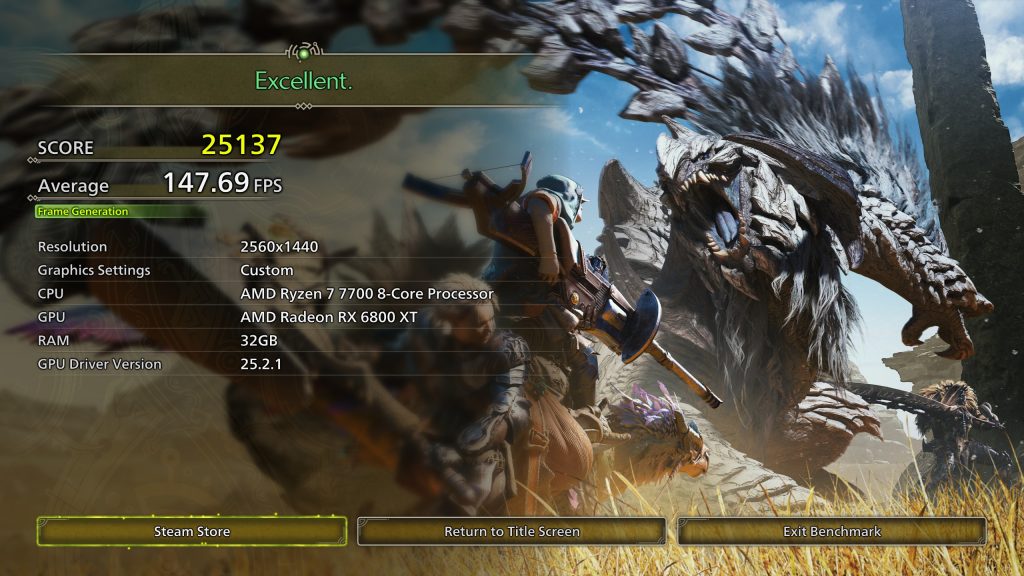
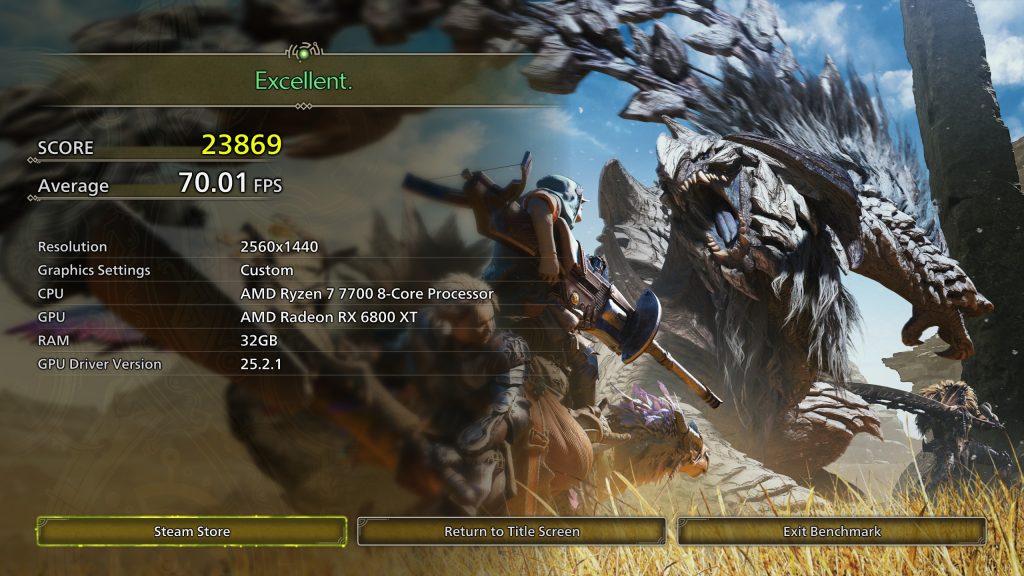
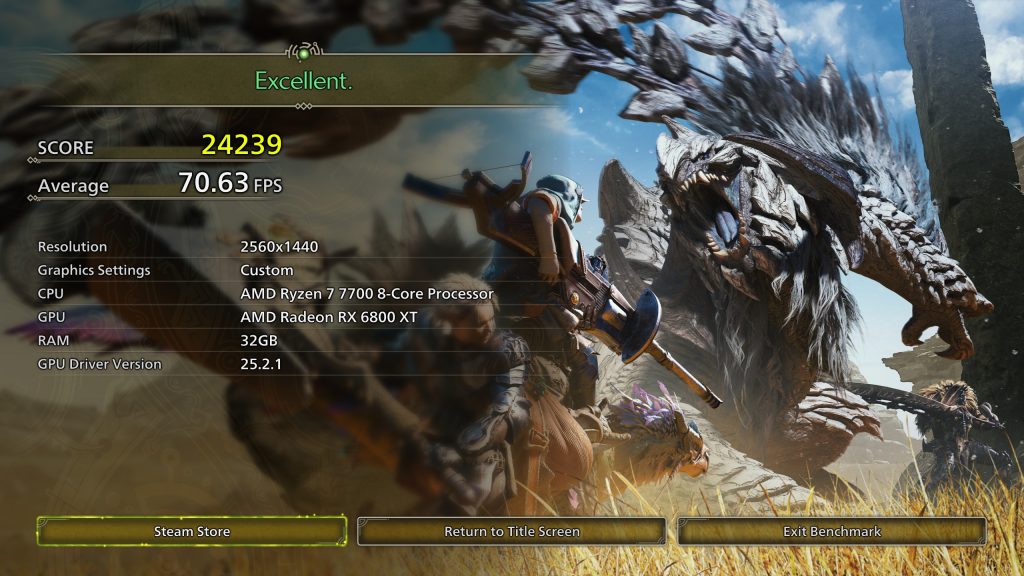
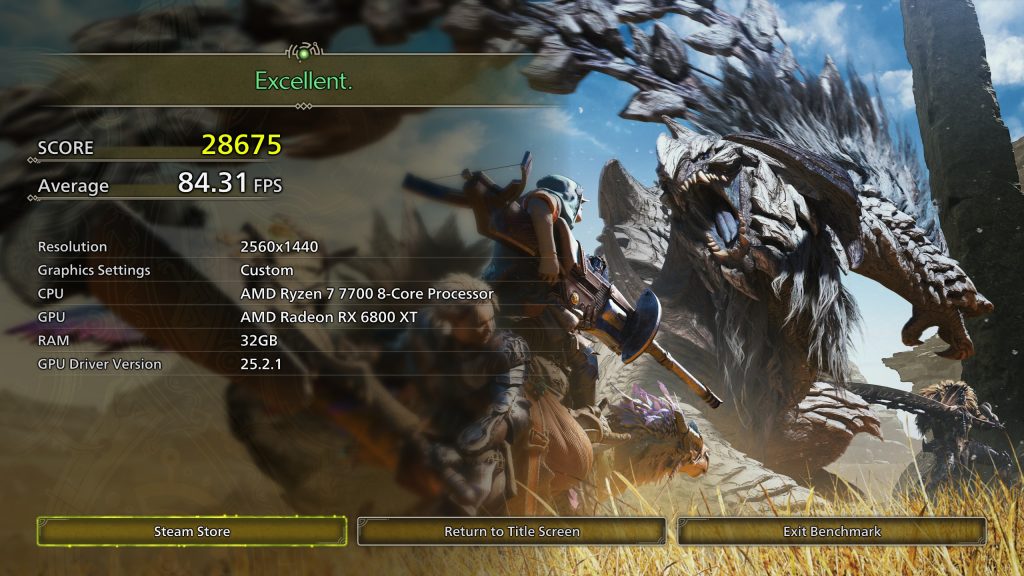

With the addition of the High Resolution Textures DLC after the game's release, what is clear is that it doesn't seem to put as much of a strain on my system, all other settings being equal. Enabling FSR3.0 led to a noticeable improvement in fps (~+20%). Personally I don't find that I can discern any differences in image quality when a small panic of thundering messages and prompts is playing out, but for psychological reasons I disabled artificial Frame Generation to avoid artefacts, as the average of 84 fps is highly satisfactory. However, it is very concerning how a decent engine like the RE Engine is quite heavy in its implementation here. Of course, the game is a delight to play, let alone in a truly open world, so perhaps some discounts are to be expected.
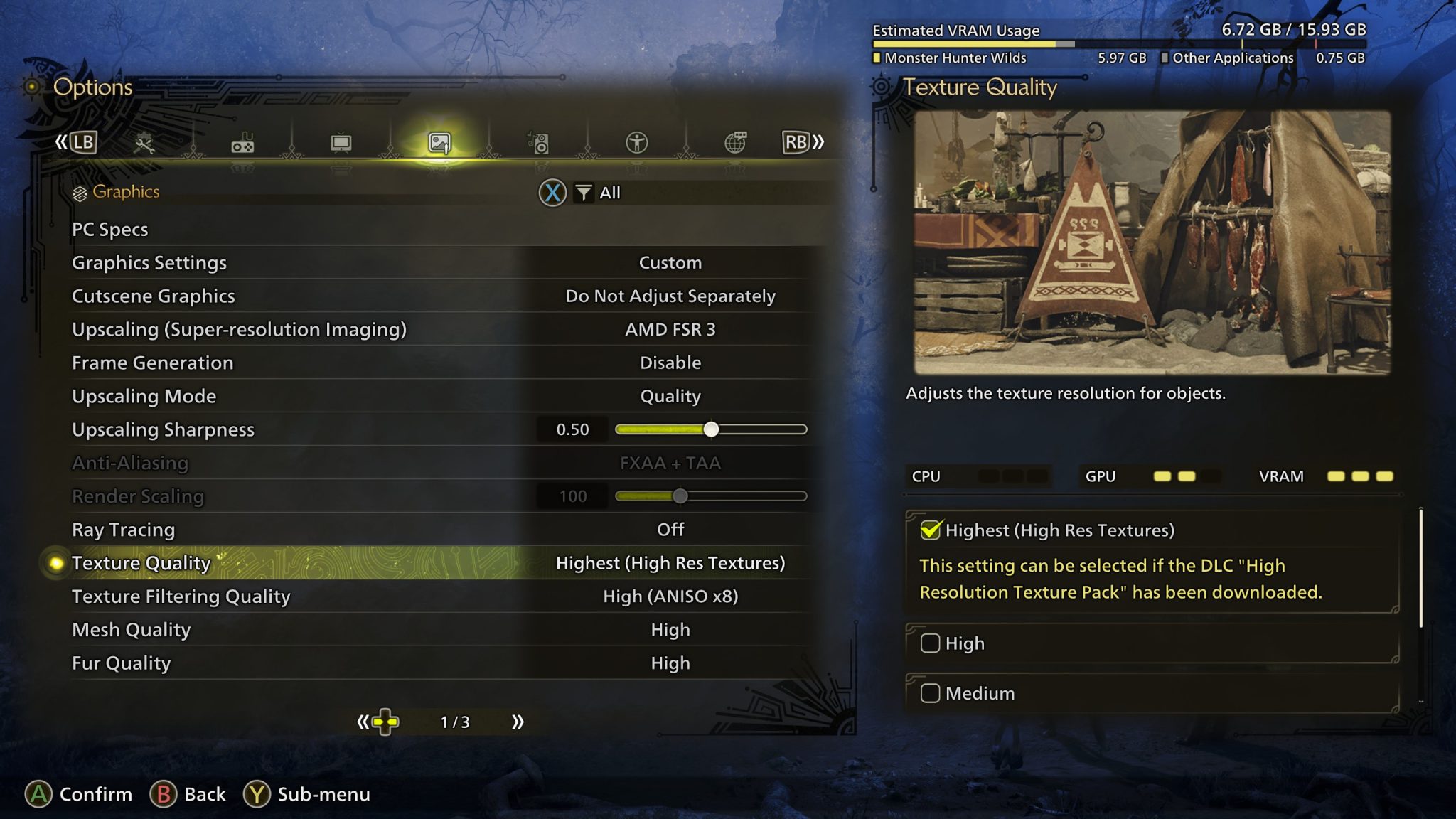
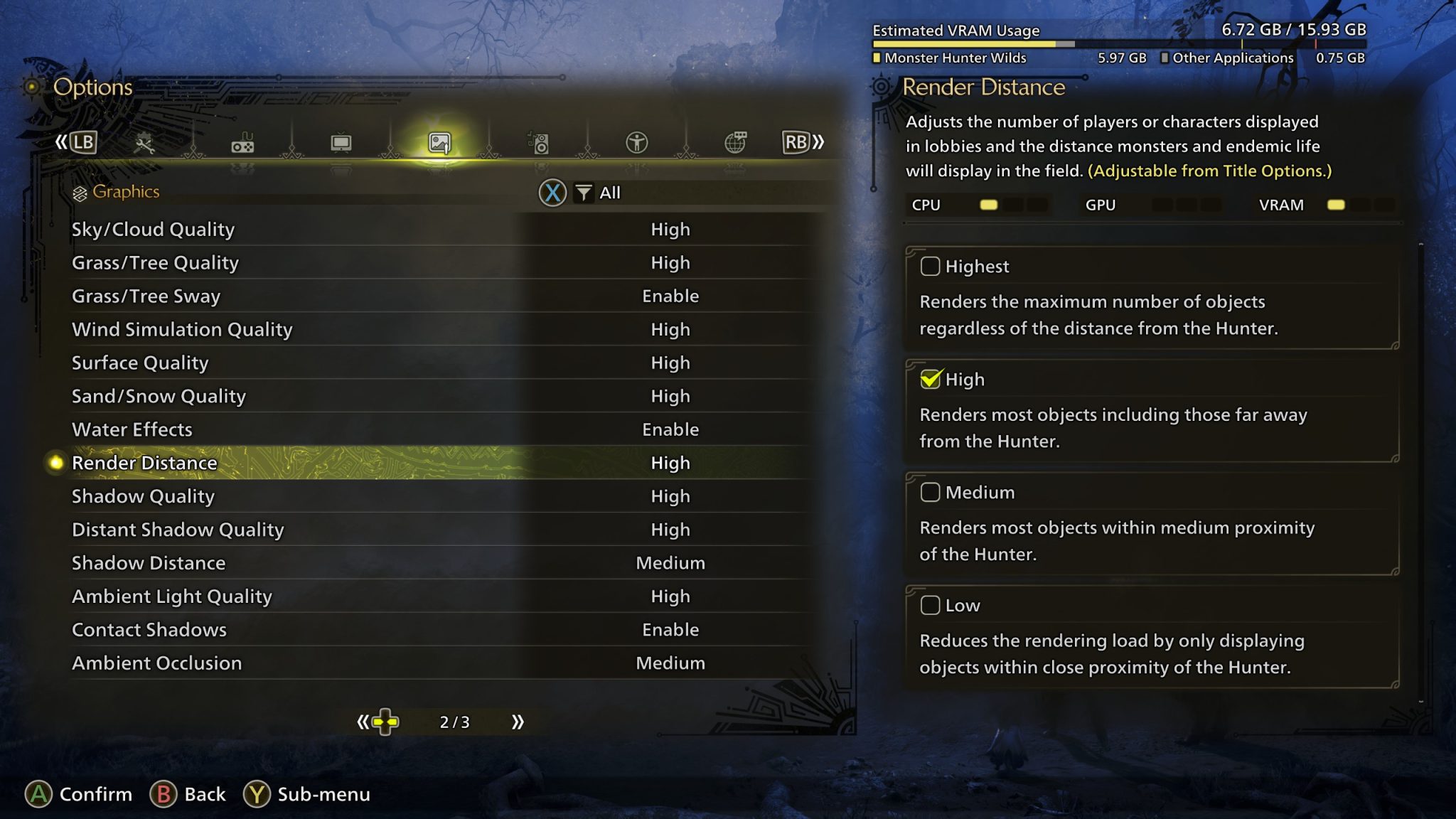
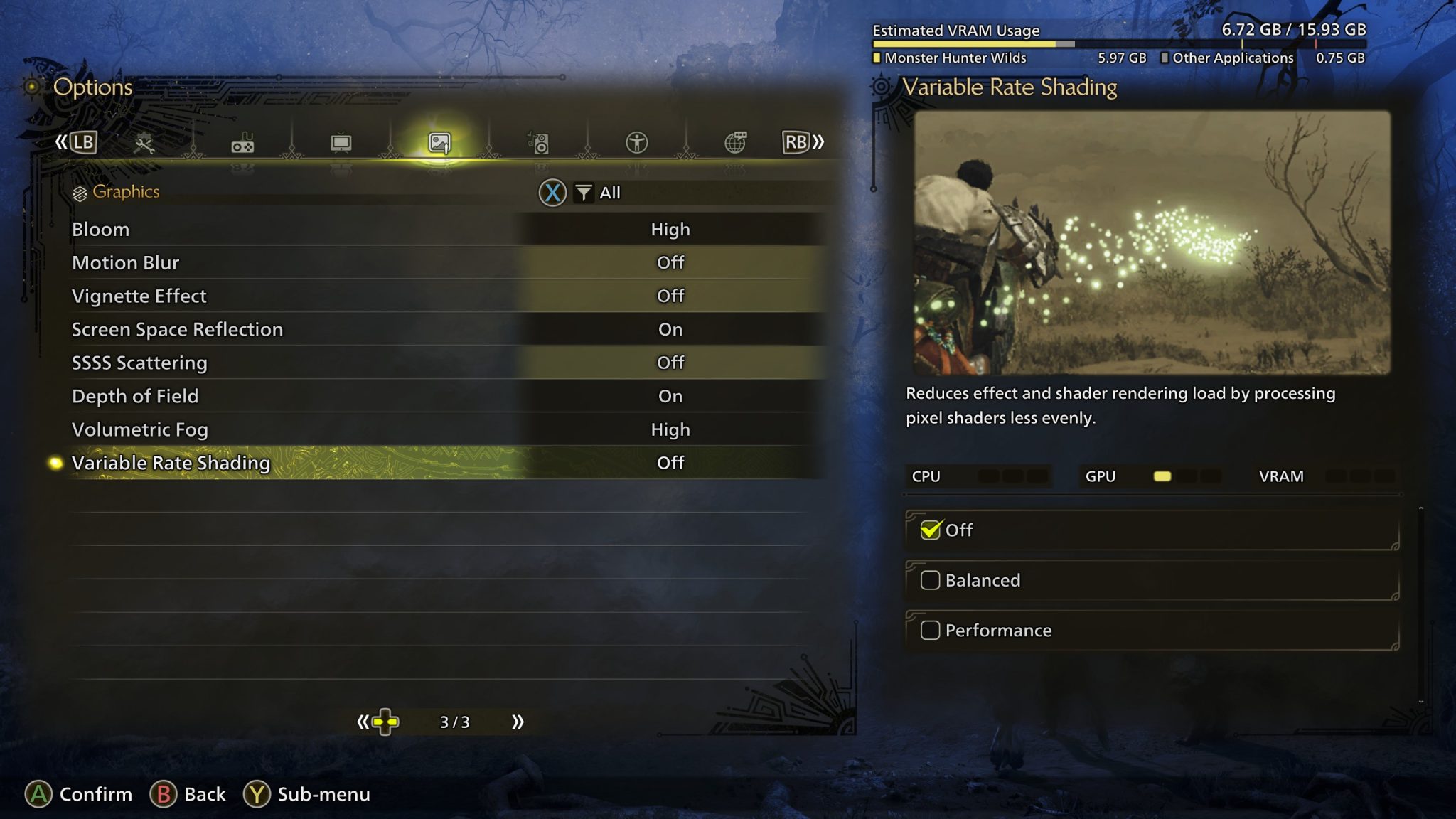
It's obvious that Monster Hunter Wilds is a title that has a solid legacy. Judging by the forums, many veterans are lukewarm on some of the changes it has brought (e.g. bestiary, game difficulty, weapon balancing), perhaps predictably so. However, Wilds pleasantly surprised me for how fun mindless it was despite its deep gameplay and challenging subsystems that tickle any theorycrafter. The design philosophy made me step out of my comfort zone and my background, and it was like discovering a new genre for the first time. It's no coincidence that it has already been breaking Steam's concurrent user records since its first day of release. If nothing else, if it disappoints in everything else, it will definitely make you hungry!
RATING - 90%
90%
Monster-ous
Monster Hunter Wilds is a great addition to the franchise while remaining accessible to new players. With a high learning curve it promises to keep you busy for hundreds of hours.
